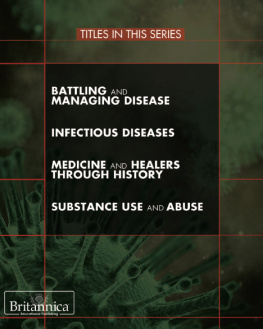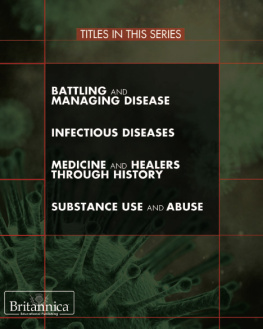Contingency Planning for Animal Diseases
The Proceedings of a Nordic-Baltic Seminar on Contingency Planning for the next Decade held 1920 September 2012 Helsinki, Finland
TemaNord 2014:509
Contingency Planning for Animal Diseases
The Proceedings of a Nordic-Baltic Seminar on Contingency Planning for the next Decade held 1920 September 2012 Helsinki, Finland
ePub produktion: Rosendahls - BookPartnerMedia
ISBN 978-92-893-2712-1
http://dx.doi.org/10.6027/TN2014-509
TemaNord 2014:509
ISSN 0908-6692
Nordic Council of Ministers 2014
Layout: Hanne Lebech
Cover photo: ImageSelect; Jrgen M. Westergaard
Print: Rosendahls-Schultz Grafisk
Printed in Denmark

This publication has been published with financial support by the Nordic Council of Ministers. However, the contents of this publication do not necessarily reflect the views, policies or recommendations of the Nordic Council of Ministers.
www.norden.org/en/publications
Nordic co-operation
Nordic co-operation is one of the worlds most extensive forms of regional collaboration, involving Denmark, Finland, Iceland, Norway, Sweden, and the Faroe Islands, Greenland, and land.
Nordic co-operation has firm traditions in politics, the economy, and culture. It plays an important role in European and international collaboration, and aims at creating a strong Nordic community in a strong Europe.
Nordic co-operation seeks to safeguard Nordic and regional interests and principles in the global community. Common Nordic values help the region solidify its position as one of the worlds most innovative and competitive.
Nordic Council of Ministers
Ved Stranden 18
DK-1061 Copenhagen K
Phone (+45) 3396 0200
www.norden.org
The Nordic Baltic seminar on Contingency planning for the next Decade was held in Helsinki, Finland from 1920 September 2012.
The objectives of the seminar were to elucidate the following issues:
- Contingency planning at international and at national level.
- Challenges facing veterinary administrations at central, regional and local level and livestock industries in contingency planning.
- Legislation and contingency planning.
- Desirable Databases software and hardware for contingency planning and implementation of disease control measures.
- Globalization and animal health threats.
Furthermore, the seminar had focus on needs and methods for preparation, up-dating and testing contingency plans in the area of Animal Health.
The first day of the seminar highlighted the potential future livestock production systems, the main elements and challenges within the area of contingency planning at National and Global level and the legislative framework for contingency planning at the EU level. The second day had focus on collection, storage and distribution of data during disease emergency situation, the importance of services provided by private practitioners to the livestock sector, equipment for use during major disease outbreaks, the interaction between the farmer, the livestock industry and official authorities during disease emergencies, financial matters and certain aspects of bio-terrorism.
The seminar showed the importance of having constructive dialogues and close cooperation between scientists, legislators, private and official veterinarians, administrators, the livestock industry and managers involved in contingency planning. The participation of representatives from World Organisation for Animal Health (OIE), the European Com-mission (EC), the Federation of Veterinarians of Europe (FVE) and the UK Veterinary Services provided valuable information on disease control measures applied outside the Nordic-Baltic countries. The participants of the seminar accepted the views that contingency planning in the area of animal health should cover:
- The pre-epidemic period (Peace time).
- The epidemic period, (War time).
- The post-epidemic period (Time of rehabilitation).
The activities to be carried out during the three different periods are closely related but nevertheless require different training programmes to ensure the presence of adequate skills.
The presentations made during the seminar and a panel discussion on biosecurity provided an excellent basis for a valuable exchange of views between the experts from the participating countries. Based on the exchange of views during the seminar 5 recommendations were adopted; the recommendations were covering aspects of:
- Biosecurity.
- Simulation exercises.
- Partnerships in contingency planning.
- It-programmes and software.
- Bioterrorism.
The full text of the recommendations is given in the section: Conclusion and recommendations.
The participants of the seminar were at the opening session welcomed by Dr. Matti Aho, Chief Veterinary Officer of Finland and by Audur Lilja Arnthorsdottir, chairman of the Nordic-Baltic Veterinary Contingency Group.
In the opening speech Dr. Matti Aho expressed a warm welcome to all the participants and the pleasure of seeing so many experts coming to Helsinki for exchanging views and discussing the important issues of contingency planning in the area of animal health. Thanks were expressed to the organizing Committee for choosing Finland as host country for the seminar and the best wishes were given for a success of the seminar.
The speech given by Dr. Audur Arnthorsdottir is presented belov.
***
Ladies and gentlemen
As chairman of the Nordic-Baltic Veterinary Contingency Group, I wish to welcome you to the seminar Contingency Planning for the Next Decade. I will start by saying a few words about the background and the purpose of the group behind this arrangement.
In 2006, the Nordic Council of Ministers adopted a strategy which included plans for a closer cooperation between the Nordic and Baltic countries in the field of veterinary contingency planning. The plan emphasized that exotic animal infectious disease, with zoonotic potential as well as emerging diseases, should be prioritized. Subsequently the Nordic-Baltic Veterinary Contingency Group was established. The group consists of members from the veterinary authorities of the Nordic and the Baltic countries. The main purpose of the group is to achieve a common understanding of the risks related to introduction of exotic infectious animal diseases between key personnel in the veterinary administrations and scientific institutions. In addition the aim is to enhance awareness of epizootic diseases, to identify areas of improvement in veterinary contingency planning and build bridges between veterinary administrations of the Nordic and the Baltic countries. In order to reach its goal, the group has arranged a number of activities during the years. Those include international simulation exercises on epizootic diseases, seminars with invited speakers, expert meetings, training activities and observer activities on international exercises. The group members keep a close contact through e-mails and at least three meetings every year. Fortunately, the membership of the group has been quite stable, which contributes to a productive and efficient performance.
Now I will present the current members of the group. From the host country for this seminar, Finland, comes Sirpa Kiviruusu, from Estonia Maarja Kristian, from Latvia Edvins Olsevskis, from Lithuania Egidijus Pumputis, from Denmark Camilla B. Andersen and Hanne M. Hansen, from Sweden Elisabet Lindal, from Norway Siri Ltvedt and finally I from Iceland. Last but not least I will present the groups consultant Dr. Jrgen Westergaard who has been an invaluable support for the group from the very beginning. I took over as chairman in the beginning of this year from Joakim Holmdahl from Sweden. Before him was Eivind Liven from Norway. Prior to this Nordic-Baltic group, a Nordic group on veterinary contingency planning had existed for two years and the chairman of that group was Sten Mortensen from Denmark.
Next page










